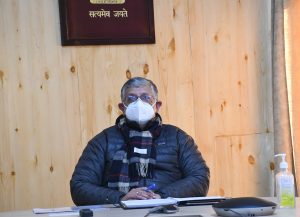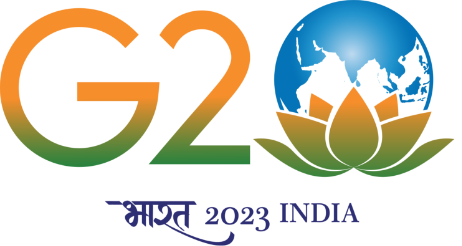Advisor Ladakh chairs 4th UTLBC meeting in Leh Strongly emphasises the extension of banking facilities to all remote villages

Leh, January 12: Advisor to Hon’ble Lt. Governor, Ladakh, Umang Narula chaired the fourth meeting of the Union Territory Level Bankers’ Committee (UTLBC) of Ladakh for the June to September quarter of 2021 in Leh through virtual mode following the Covid-19 guidelines.
The Assistant General Manager/Convenor UTLBC of UT Ladakh, Tsering Morup gave a detailed presentation on the position of districts and banks regarding their Credit Deposit (CD) Ratio. The Advisor was informed that the total amount of deposits stood at Rs. 6627.10 crore with a deposit growth of 21.53% on a year-on-year basis. The total credit amount was recorded at Rs. 2759.40 crore with credit growth of 29.04% in UT Ladakh. The overall CD Ratio was thus calculated to be 42%.
The Advisor expressed concern over the low CD Ratio and emphasised the need for considerable effort to meet the 60% benchmark laid down by the Reserve Bank of India (RBI), especially by HDFC, AXIS, and YES banks, which have reported the lowest CD Ratio. It was also pointed out that the extension of banking facilities to all the remote villages of Ladakh should remain the top priority and the option of mobile van banking services with VSAT connectivity should be explored for places where internet connectivity is the major challenge and attempts of employing the BC model haven’t been successful. The Advisor also suggested exploring the option of involving Common Service Centres set up under every Gram Panchayat to boost financial inclusion in the UT.
The UTLBC, under the Advisor’s direction, decided to constitute a committee of all the participating banks along with the National Bank for Agriculture and Rural Development (NABARD), and the Department of Agriculture to work on bankable projects in the agriculture/horticulture sector which remains the priority area for the Administration. This will not only financially benefit the local population but also improve the credit line.
A detailed discussion was held on ways to expand and deepen the digital payment ecosystem. Additional Secretary Finance, D.C. Rajath Kumar suggested monthly monitoring of the QR codes distributed to the vendors for a comprehensive study of its use. He also mentioned that banks should collaborate with various market associations to spur progress. Adding to it, Regional Director (J&K), RBI, R.O. Jammu, Kamal P. Patnaik instructed the banks that all customers be provided with the option of a digital platform to make Leh district a 100% digitally enabled ecosystem by March 2022.
The meeting participants were informed that out of 294 sanctioned cases of Street Vendor Scheme (PM SVANidhi) – First Tranche, up to September 30, 2021 – 273 are accepting payment digitally. However, the Advisor directed that the progress for improving digital payments be continued to be monitored in UTLBC meetings. Further, he instructed the convener of the banks to organise more financial literacy camps so that people are made aware of various priority sector bank linked Government schemes and can avail the benefits of such schemes. It was also decided that a roster be made for literacy camps to be held in educational institutes. Furthermore, the bankers and concerned departments were directed to ensure clear communication about banking benefits at the grass-root level.
Other important issues discussed were the achievements in lending to priority sector/non-priority sectors under the Annual Credit Plan 2021-22 for various Government sponsored schemes.
The meeting was attended by Administrative Secretaries; Deputy Commissioners (Leh and Kargil); Under Secretary, DFS, MoF, GoI (Nodal Officer for Ladakh UTLBC); Directors of concerned departments; Regional Director (J&K), Reserve Bank of India, R.O. Jammu; GM, (FIDD), Reserve Bank of India, R.O. Jammu; Chief General Manager, NABARD, R.O., Jammu; DGM, SIDBI, Jammu, and representatives of the member banks and financial institutions.





